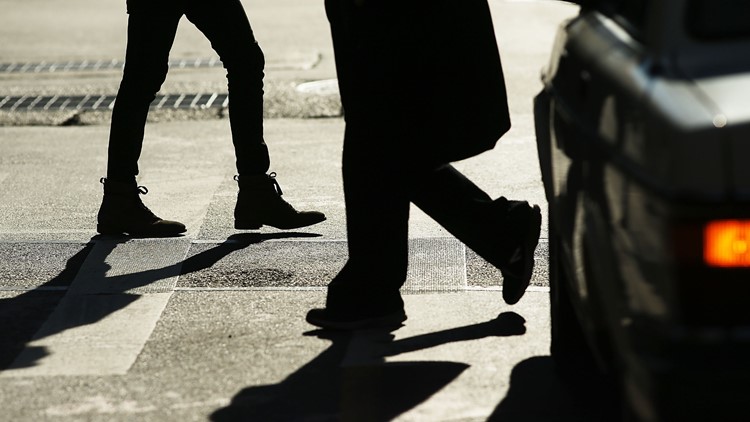VIRGINIA BEACH, Va. — New research from AAA claims that automatic emergency braking systems in vehicles with pedestrian detection are inconsistent and they proved to be completely ineffective at night.
The study said 75 percent of pedestrian fatalities occur after dark.
The braking systems were also challenged by real-world situations, like a vehicle turning right into the path of an adult. AAA’s testing found that in this simulated scenario, the systems did not react at all. The vehicles collided with the adult pedestrian target every time.
For the safety of everyone on the road, AAA supports the continued development of pedestrian detection systems, specifically when it comes to improving functionality at night and in circumstances where drivers are most likely to encounter pedestrians.
"Pedestrian fatalities are on the rise, proving how important the safety impact of these systems could be when further developed,” said Georjeane Blumling, vice president of Public Affairs for AAA Tidewater Virginia. “But, our research found that current systems are far from perfect and still require an engaged driver behind the wheel.”
In partnership with the Automobile Club of Southern California’s Automotive Research Center, AAA evaluated the performance of four midsize sedans equipped with automatic emergency braking with pedestrian detection to determine the effectiveness of these systems.
Overall, the systems performed best in the instance of the adult crossing in front of a vehicle traveling at 20 mph during the day. In this case, the systems avoided a collision 40 percent of the time. But, at the higher speed of 30 mph, most systems failed to avoid a collision with the simulated pedestrian target.
AAA said on average, nearly 6,000 pedestrians lose their lives each year, accounting for 16 percent of all traffic deaths, a percentage that has steadily grown since 2010.
In Virginia, AAA said more than 114 fatalities were reported from crashes involving pedestrians in 2018.
AAA recommends drivers always:
- Be alert of their immediate surroundings. Do not rely on pedestrian detection systems to prevent a crash. This technology should only serve as a backup and not a replacement for an engaged driver.
- Read the owner’s manual to understand what safety systems the vehicle is equipped with. Before leaving the lot, ask the dealer to explain how these systems work, including what safety system alerts sound and look like and what triggers their activation.
- Use extra caution when driving at night since this is the riskiest time for pedestrians and where the systems struggled the most. Previous AAA research found that headlights, even in new condition, do not provide the amount of light needed for drivers to appropriately react to something or someone in the roadway.



